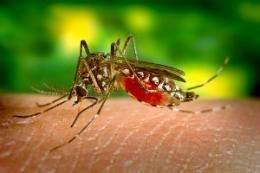Climate change to increase tropical disease range

According to climate modelling for 2050, northern sections of WA could present ideal conditions for dengue fever.
At present the receptive region for the mosquito Aedes aegypti—a vector for the disease—is confined to the northern part of Australia with sporadic incidences in Queensland.
But in a high-emissions temperature scenario, this zone could spread along the coast from the Northern Territory border as far south as Carnarvon.
These findings were part of Professor Anthony McMichael’s Australian Academy of Science (AAS) public lecture Pestilence, pandemics and climate change, presented at Shine Dome, Canberra.
Sometimes known as ‘bone-break fever’, dengue symptoms include elevated temperature, joint ache, severe headaches, weakness and skin rashes. Five per cent of cases are fatal.
In the first quarter of 2011, 166 cases were reported in WA, up from 85 in 2010. These originated overseas, with 80 percent traced to Indonesia.
According to Prof McMichael, changes in temperature and rainfall patterns will influence the emergence and spread of infectious diseases across Australia.
“These particularly include dengue fever and Ross River Virus as well as the major causes of gastroenteritis or food poisoning,” he says.
“There is also an increased likelihood of new infectious diseases emerging.”
In his lecture, Prof McMichael traces the ebb and flow of pestilence, pandemics and climate change, linking periods of global warming and cooling to spikes in infectious disease.
He notes that small changes in climate can have high impacts.
During the Justinian Plague of 542, a three to four degree cooling event combined with unusual rain levels resulted in conditions rife for the proliferation of the xenopsylla cheopsis flea—carrier of the bubonic plague.
Similarly, during the Black Death, a 1 degree C rise in spring temperatures correlated to an increase in human plague outbreaks by 63 percent.
As our temperatures rise, WA, like the rest of Australia, should be prepared for rapid ecological change.
“In terms of food yields, any departure from average climate conditions will put a strain on food species—plant and animals,” says Prof McMichael.
He notes bats infected with the Hendra virus in Asia have moved closer into peri-urban settings due to loss of habitat caused in part by temperature change and altered rainfall patterns.
By logical conjecture, similar migrations could affect WA, including incidences of Ross River Virus (RRV) and Barmah Forest Virus (BFV), which are transmitted through intermediary animals.

















